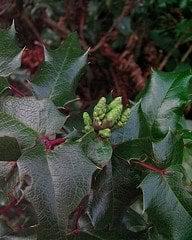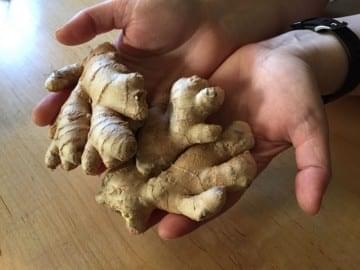Oregon Grape offers an array of health benefits to the wise gardener. Those who aren’t interested in harvesting the root still love Oregon grape for it’s durability and drought tolerance.
The first step in using Oregon Grape wisely is to correctly identify it. Garden shops may have one of two botanical names attached to the tag. Look for either Berberis or Mahonia as part of the species name. Botanists will use both names to identify this plant.Oregon’s state flower has been seeing a resurgence of popularity in cultivated landscapes. This prickly green shrub was once difficult to find on garden shop shelves as it was considered an unrefined plant. Now Oregon Grape is difficult to find because it’s selling rapidly. Customers are eager to harvest the benefits this flexible plant has to offer.
1. Landscaping – Oregon Grape comes in three different sizes for the homeowner to choice from. Tall Oregon Grape (Berberis aquafolium) grows up to eight feet (2.5 m) tall. Dull Oregon Grape (Berberis nervosa) gets to be half that height. Creeping Oregon Grape (Berberis repens) only reaches 12 inches (30 cm) in height and is used as a ground cover for low maintenance landscapes. All varieties grow well in the shade.
2. Protection – With its holly-like leaves, Oregon Grape provides natural protective barrier along properties lines. Smart homeowners with fences or walls who have a history of being tagged with graffiti find a sharp row of this evergreen does a wonderful job of changing the plans of paint can wielding trespassers.
3. Drought gardens – Oregon Grape is a native plant of the Pacific Northwest. It has had a millennium to adjust our mild climate. Once established, it doesn’t need any additional watering or pruning in Oregon gardens. Look for this plant in parks and newly planted greenways to see how well it does in your own environment.
4. Wildlife – Oregon Grape flowers attract beneficial insects to the landscape. Birds love Oregon Grape berries in the summer and, since the fruit dries on the shrub in fall, dine on it in winter when other food is scarce.
5. Medicine – Almost every part of the plant is full of berberine, a natural antibiotic. Peel back the outer layer of bark to reveal the yellow wood of the stems and roots. This is the medicine waiting just under the surface of Oregon Grape. The flowers and berries are also berberine rich.
6. Berries – Oregon Grape wines and jellies were enjoyed by pioneers. Oregon Grape berries are bitter in dry climates and sweet in moist areas. The tasty, purple fruit is rich in antioxidants and can be nibbled right off the bush.
7. Flowers – Warm spring weather coaxes a cheerful yellow spray of flowers from Oregon Grape’s branches. Gardeners use this plant to brighten up shady corners of their yard. Cooks pick the flowers to fry them into zesty fritters. Bees collect pollen from these blossoms to make a richly colored honey.
Oregon Grape can be confused with holly shrubs as they both have prickly leaves. Holly has a red berry that is toxic to humans. Be sure you’ve properly identified Oregon Grape or any other plant before harvesting and eating any part of it or using it externally or topically.






